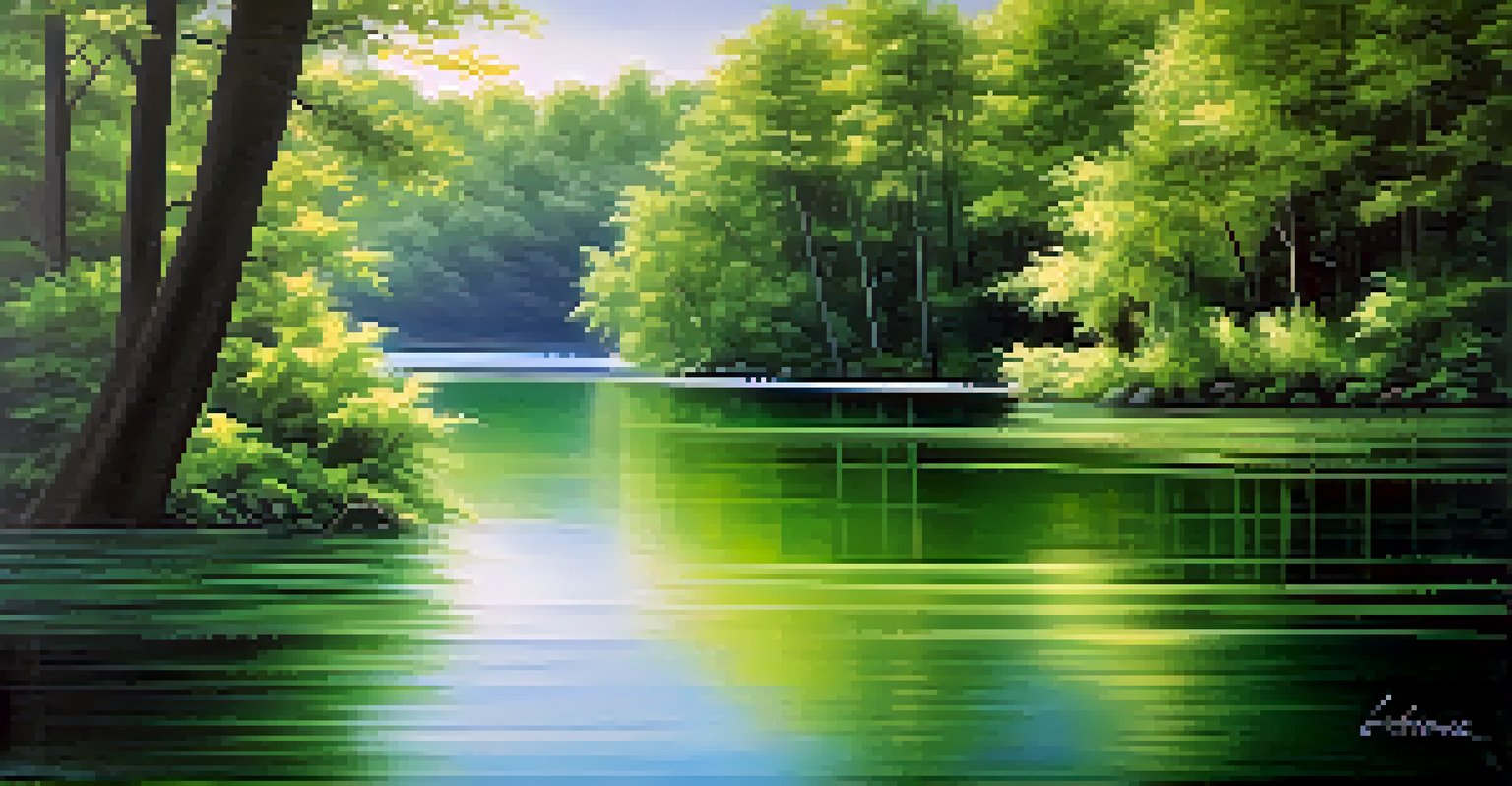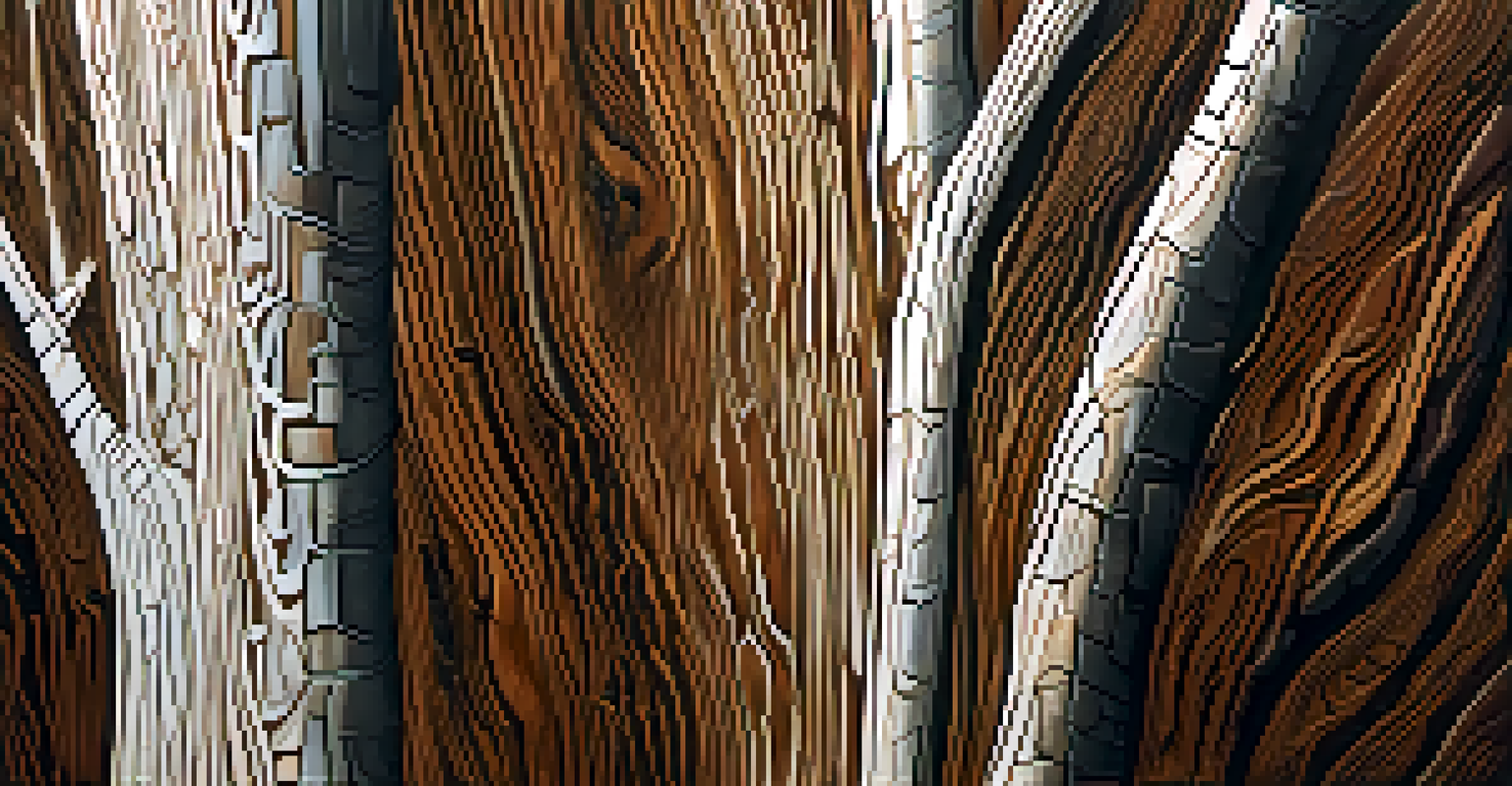Texturing Techniques in Oil Painting: Adding Dimension

Understanding Texture in Oil Painting
Texture in oil painting refers to the surface quality of the artwork, which can be smooth, rough, or everything in between. It plays a crucial role in how a painting is perceived, as it adds depth and interest. By manipulating texture, artists can evoke emotions and create a more immersive experience for viewers.
Texture is the touchstone of visual art; it creates a tactile quality that draws the viewer in and connects them to the piece.
Different textures can convey different feelings; for instance, a rough surface might suggest a rugged landscape, while a smooth finish could evoke calmness. Artists often experiment with various techniques to achieve the desired effect and enhance their storytelling. Understanding the importance of texture is the first step in mastering its use.
Incorporating texture into your work is not just about aesthetics; it's also about technique and skill. By learning how to manipulate paint, you can add a whole new dimension to your art. Let's dive into some effective texturing techniques that can elevate your oil painting.
Impasto: Bold and Dynamic Textures
One of the most popular texturing techniques is impasto, where paint is applied thickly to create a three-dimensional effect. This method allows the brush strokes to be visible, adding energy and vitality to the artwork. Artists like Vincent van Gogh famously used impasto to create swirling skies and vibrant landscapes.

To achieve this effect, you can use a palette knife or a stiff brush to lay down thick layers of paint. The key is to use high-quality, buttery oil paint that holds its shape well. Impasto can be used sparingly for highlights or generously across the canvas to create movement and drama.
Texture Enhances Artistic Expression
Texture in oil painting adds depth and interest, allowing artists to evoke emotions and create immersive experiences.
While impasto is eye-catching, it requires careful planning regarding color and composition. The raised areas can cast shadows, influencing how the painting is viewed in different lighting. Experimenting with impasto can lead to stunning results, making your artwork truly stand out.
Glazing: A Subtle Approach to Texture
Glazing is another technique that can enhance texture by applying thin, transparent layers of paint over dried layers. This method creates depth and richness in color, allowing the underlying layers to peek through. Glazing is often used to achieve luminous skin tones or to create atmospheric effects in landscapes.
Art is the most beautiful of all lies; it is the textures and layers that reveal the truth behind the illusion.
To glaze effectively, you’ll want to mix your oil paints with a medium, such as linseed oil or a glazing medium, to create a transparent layer. Applying multiple glazes can build complexity, making the colors appear more vibrant and alive. This technique may require patience, as each layer needs to dry before applying the next.
Glazing can add a delicate texture that contrasts beautifully with more tactile techniques like impasto. When combined, these methods can result in a beautifully layered painting that captivates the eye. It’s a great way to enhance your artwork while maintaining a sense of softness.
Sgraffito: Drawing with Texture
Sgraffito is a technique where you scratch through a layer of wet paint to reveal the dry layer beneath. This method creates unique textures and patterns, adding a playful element to your artwork. It's particularly effective for creating details like tree bark, fur, or other intricate textures.
To use sgraffito, simply apply a base layer of paint and allow it to dry slightly but not completely. Then, using a palette knife or any sharp tool, scratch into the wet paint to create designs. The contrast between the scratched areas and the underlying color can result in striking visual effects.
Combining Techniques for Impact
Utilizing a mix of texturing techniques, like impasto and glazing, can produce visually stunning results that engage viewers.
This technique encourages spontaneity and creativity, as you never quite know how the textures will turn out. It’s a wonderful way to add character and depth to your painting, allowing your personal style to shine through.
Using Texture Paste for Added Dimension
Texture paste is a versatile medium that can be mixed with oil paint to create a thicker consistency. This paste can be applied with brushes or knives to build up layers, creating an impasto-like effect without using pure paint. It's ideal for artists looking to experiment with texture while maintaining control over their composition.
When using texture paste, you can create various effects, from smooth finishes to rugged surfaces, depending on the tools and techniques employed. The paste can also be tinted with oil color, allowing for endless creative possibilities. This technique is especially useful for mixed media pieces, where you can incorporate other materials.
Texture paste dries to a hard finish, which means it's essential to plan your design carefully before application. Once dry, you can paint over it with oils to add color and depth. This approach opens up a world of possibilities for artists seeking to enhance their work with unique textures.
Combining Techniques for Unique Effects
One of the most exciting aspects of oil painting is the ability to combine various texturing techniques to create unique effects. For instance, you might start with a smooth glaze, then add impasto highlights for depth and dimension. This combination can lead to visually stunning results that engage viewers on multiple levels.
Experimenting with different textures allows you to find your own artistic voice. Don’t be afraid to mix techniques; for example, adding sgraffito details over a textured paste background can create a captivating contrast. The goal is to create a cohesive artwork that tells a story through its textures.
Proper Care for Lasting Art
Caring for textured oil paintings is crucial to preserving their vibrancy and longevity, ensuring they remain captivating over time.
Remember, the beauty of art lies in experimentation. The more you explore and combine different texturing methods, the more confident you'll become in expressing your creativity. Each layer adds to the narrative of your piece, making it a journey of discovery.
Caring for Textured Oil Paintings
Once your textured oil painting is complete, it's essential to care for it properly to ensure its longevity. Textured surfaces can be more vulnerable to damage, so consider framing your work under glass or displaying it in a safe environment. Proper care will help preserve the colors and textures you've worked hard to create.
It's also crucial to allow your painting to dry thoroughly before placing it in storage or displaying it. Oil paints can take time to cure fully, especially with thick applications of texture. Patience is key here, as rushing the drying process can lead to smudging or damage.

Regular dusting and avoiding direct sunlight will help maintain the vibrancy of your textured artwork. By taking these simple precautions, you can enjoy your beautiful textured paintings for years to come, and they will continue to inspire both you and your viewers.